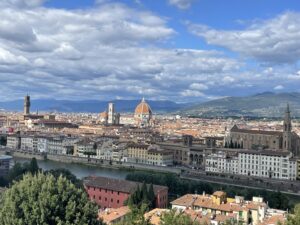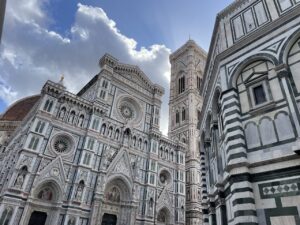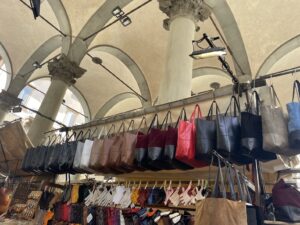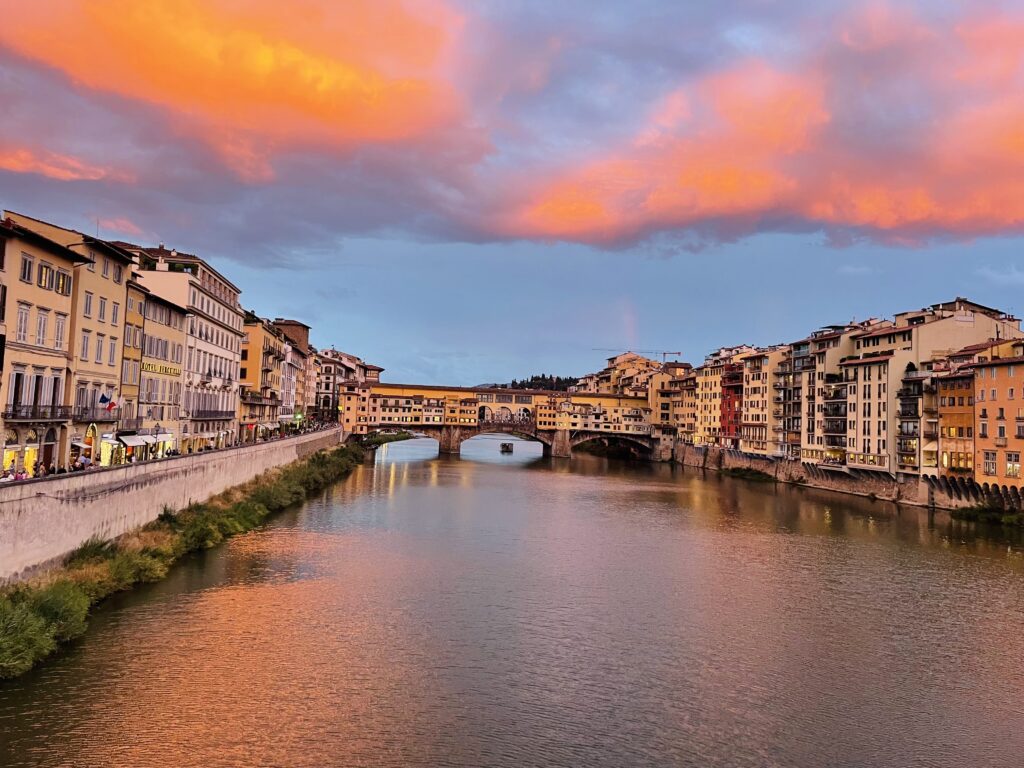Florence, known as Firenze in Italian, is often hailed as one of Italy’s most beloved cities. Even my Italian husband considers it his favorite (while mine remains Venice). Due to Florence’s historical significance, artistic marvels, and rich culinary heritage make it a must-visit destination. Here’s why Florence should be at the top of your travel list:
What to know about Florence?
Located in Tuscany, Florence is considered the birthplace of the Italian Renaissance. This pivotal period in European history was marked by a surge in art, literature, and scientific innovations. The city boasts a cultural legacy that includes iconic works by renowned artists such as Michelangelo, Leonardo da Vinci, and Botticelli. Literary masterpieces like Dante’s Divine Comedy also have their roots here.
During Dante’s era, Italy was divided into various regions with distinct dialects. Notably, Dante chose to write his famous work The Divine Comedy in the Tuscan dialect. This influential writing helped to unify Italy linguistically and laid the foundation for modern Italian. As a result, Florence has long been seen as a symbol of Italian identity and unity.

What to see?
Duomo (Cathedral of Santa Maria del Fiore): To fully appreciate Florence, climb to the top of Brunelleschi’s Dome for panoramic views of the city. This iconic structure is a testament to Renaissance engineering marvels.

Uffizi Gallery: With one of the most extensive collections of Renaissance art worldwide, the Uffizi Gallery is a must-visit for art enthusiasts. It was commissioned by the powerful Medici family of the 16th century. The Uffizi houses many artistic masterpieces: Botticelli’s The Birth of Venus and Primavera, Da Vinci’s Annunciation, Raphael’s Madonna of the Goldfinch, and Michelangelo’s The Tondo Doni.
Accademia Gallery: Home to Michelangelo’s David, one of the world’s most famous sculptures. Carved from a single block of marble, this statue stands over 17 feet tall and depicts David in a moment of triumph. The sculpture symbolizes Florence’s republican ideals and its defiance against tyranny.
Ponte Vecchio: This medieval bridge, once home to butchers and tanners, is rich in stories and legends. One such legend involves the Vasari Corridor. It is said it was built as a secret passage for the Medici rulers to move discreetly between their palaces. Remarkably, the Ponte Vecchio survived World War II. It’s rumored that German officer, Gerhard Wolf, disobeyed orders to destroy the bridge recognizing its historical value. Moreover, today it serves as a beloved symbol of resilience.

What to eat?
Florentine cuisine, known for its hearty meat dishes, reflects the region’s pastoral landscape. The rolling hills of Tuscany are ideal for vineyards and pastures, providing a rich supply of meats. Tuscan cuisine, rooted in peasant traditions, features robust, flavor-packed dishes.
Top Recommendations:
All’Antico Vinaio: For an unforgettable sandwich experience, visit All’Antico Vinaio. Although there are several locations across Italy, this gem originated in Florence. Don’t be deterred by the long line; it moves quickly. I truly miss this place since moving away from Italy.

Here are some examples of famed Florentine Dishes:
-
Bistecca alla Fiorentina: This thick, juicy T-bone steak is typically sourced from Chianina cattle. Seasoned simply with salt and grilled over a wood fire, it is served rare to highlight its natural flavors and tenderness.
-
Ribollita: A comforting Tuscan soup made with stale bread, cannellini beans, vegetables, and herbs. The name “ribollita” means “reboiled,” reflecting the tradition of simmering the soup multiple times to deepen its flavor.
-
Pappa al Pomodoro: Another classic Tuscan soup, this dish features tomatoes, stale bread, olive oil, garlic, and basil. The bread absorbs the tomato broth, creating a thick, porridge-like consistency.
-
Crostini di Fegato: This popular appetizer consists of thinly sliced toasted bread topped with savory chicken liver pâté.
-
Lampredotto: For adventurous eaters, lampredotto is a traditional Florentine street food made from the fourth stomach of a cow, simmered in a savory broth and served on a crusty roll with salsa verde or spicy chili oil.
What to buy?
When thinking of Florence, leather comes to mind. The city is renowned for its high-quality leather products, including bags, wallets, belts, and jackets. While you’ll find sellers throughout the city, I recommend the Mercato Nuovo. This outdoor market is filled with stalls offering artisanal leather goods at great prices. During my visit, I purchased three genuine Italian leather purses and two small coin purses for about 150 Euros. They’ve held up remarkably well.

Florence beckons travelers with its world-renowned galleries, historical glimpse into the grandeur of its medieval past, and rustic culinary experience. Get lost in this ancient city where every cobblestone street and hidden piazza tells a story of centuries past when you visit Florence Italy.
I lived in Italy for over a year, so for more Italy travel tips, check out my other posts:
